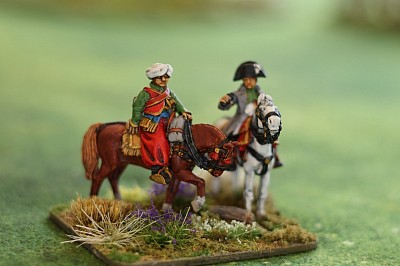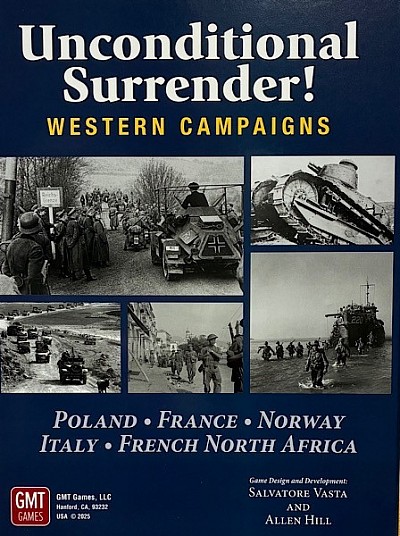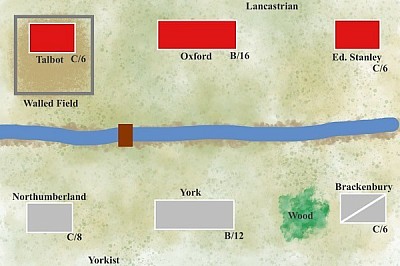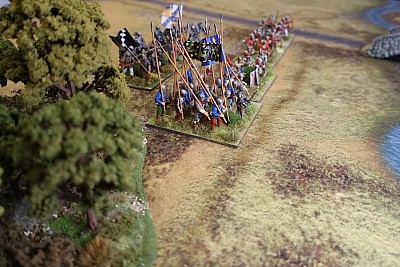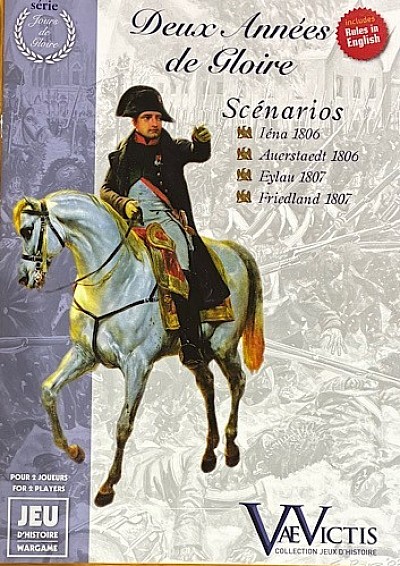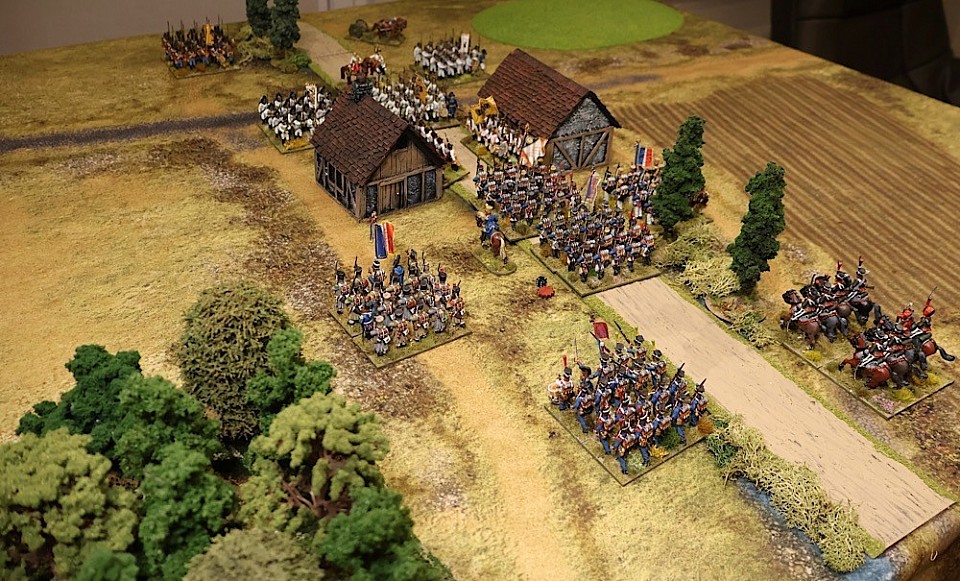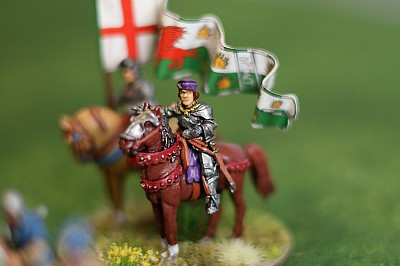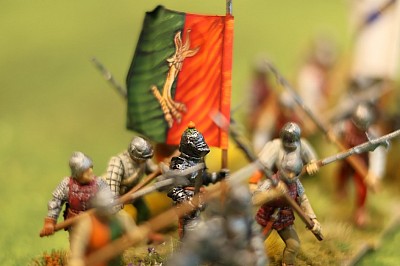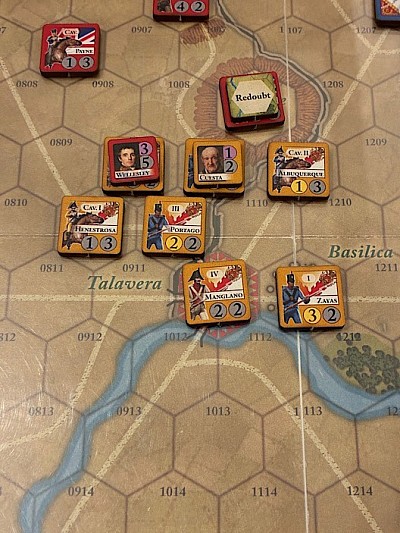Dear Diary - a rolling 4 months of comment
Christmas Day Newsletter
Good Morning and best Christmas wishes to all who pass by.
I have put the link to my Christmas Newsletter up on the Battlefields & Warrior Blog.
This year it comes in at 30 pages and is a mix of figure and boardgaming content, plus some observational stuff, so if you find yourself with a bit of spare time and fancy some wargaming content, then please head over there and have a mooch (link below) - I hope something there will interest you.
Finally, a thought goes out to all those, who for whatever reasons will not be enjoying the day.
Link;
https://battlefieldswarriors.blogspot.com/2025/12/christmas-2025-newsletter-post.html
The Analogue Hobby Painting Challenge
The Analogue Hobby Painting Challenge
Oh dear! - work to be done :-) The day has arrived! The 16th Challenge starts today and runs for 3 months until the 21st March next year.
It is run by some very kind people, who give freely of their time to organise things and keep the submissions process running smoothly.
Photo ( thanks clipart)
Yesterday I received my permissions to post on the TAHPC blog. The idea is once I have painted a group, I take at least 3 pics and write some blurb and do a draft blogger post on their site.
Someone then checks it over, awards points and hits the publish button.
It is NOT intended as a place to show off wondrous painting skills (thankfully), but rather, to encourage gamers to get painting part of their stash during the winter months.
I have set myself the goal of 400 points. That roughly equates to 80 x 28mm foot figures, which in turn, for me, equates to four 20-man units. I might normally do 60 in that time, so this is a bit of a stretch goal … which is what they suggest to do.
The Challenge comes at a time when I need to expand my Napoleonic Austrians, to get the numbers of the ‘Pocket Army’ up to something a bit more flexible. Four new units will make a big difference to the level of game that I can play.
A first submission must be made by 19th January …. Otherwise you are relieved of your place at the table!
Looking at the instructions that I have been sent, it appears I am one of 96 who have committed to picking up their brushes for the challenge.
As units get done, I will add a quick post here to show progress, before they march off to barracks.
Again, thanks to Curt and his friends who give up their time to allow all of this to happen.
2025 Christmas Day Blog Post
Some will know that each year I do a lengthy wargaming Christmas Blog post on Christmas Day. It’s just a gentle ramble of absolute no importance, covering both boardgame and figure game related things.
It’s intention is not meant to be a self absorbing post. Rather it is made in recognition of gamers who for one reason or another are not doing Christmas this year, but who might like the distraction of some wargaming material on what is otherwise one of the quietest days of the year on the internet. There should be enough there to get through a coffee …. or two!
At 0700 hours GMT on Christmas Morning, I add a post here that has the necessary link with the 2025 Newsletter, which will be in the form of a downloadable PDF file from my DropBox account. Consider it kindly, many hours of work sit behind it.
The Bulge resumes and a new game arrives
Due to the Lurgy tricking me and coming back for a second bite! The Ardennes game that I set up to play as an anniversary game on the 16th has just sat there winking at me. But today, the first three turns got played, I look forward to getting that done over the next day or so.
Making the day even better - Unconditional Surrender! has just arrived by courier and at £35 in the UK (Second Chance Games) it offers a lot for it's money. I have never owned or played its big brother, but this seems a very do-able bunch of campaigns covering, Poland, France, Norway, Italy and French North Africa.
The Poland game is just half a turn long and seems a good intro to the system - I watched it being played on YouTube, which made me buy it.
Time scale Monthly Turns, map scale, 30 - 40 miles per hex, unit scale, Army, fleet or wing.
I was intrigued to see that the side of the box has a panel that gives the name and address of the EU importer (UGG) and the UK importer (SCG), this is actually printed on the box, it is not a sticker, so it looks like some bespoke box lids are now being done, probably based on pre-orders. I am wondering whether this was part of a contingency plan by a U.S. game publisher to avoid recent tarrifs by having some stocked shipped direct from China direct to two European distributers.
The blurb on the back of the box says it plays in ½ hour to 4 hours, has complexity rating of 5 and solitaire rating of 7, so hopefully there will be stuff here that will fit into our shortish face to face sessions.
I always had the impression that the system would be rated higher than 5 for complexity, but I think this box is an easier route into the system and it includes a superb 32 page Guidebook (in additiion to the play book) which is VERY well illustrated and gives a playthrough of the France '40 scenario (rather similar to what Swords and Bayonets does for the GBoACW). As I understand it the fleet rules for this game have been heavily abstracted with the consequence of reducing complexity.
Counter density for these small campaigns is low and the map boards are all U.S. letter sized, except for the North Africa map, which is 2 times a letter size, done longways.
Rules look to cover land fighting, integrated with air, naval and invasion. Also production is thrown into the mix.
The play aid is a folded card document. It looks dense, but also looks all encompassing and superb.
There is a single counter sheet with ½ inch counters.
Each map obviously has to include all the geographic elements that are physically exist, but the non-relevent areas are shaded out to indicated that they are prohibited, so for example in the Italian campaign, in capturing italy, the map also captures the nations on the other side of the Aidriatic, but Greece, Albania, Yogoslavia and Hungary are shaded out, as is a one hex capture of North Africa .... though Tunis and 2 adjacent hexes are in.
I read on BGG that at a future point an Eastern Campaigns module will be made, which doubled my enthusiasm to jump on this .... 1 set of rules, lots of campaigns.
I am quoting from the back panel blurb here ..... 'USWC is dereived from Unconditional Surrender! World War 2 in Euriope (USE). They each have the same unit and map scale and use the same rules for air, ground and combat mechanics. However more strategic elements (e.g diplomacy, strategic warfare etc) have been abstracted or removed in USWC to simplify the rules and reduce playing time'.
I did read somewhere that if you have USE, you don't need to buy USWC. There are 9 scenarios here and a couple are 'what if' such as France 1941.
Anyway, much to like and I will set some proper time aside to break into this. I think this is going to fly off the shelves and is worth getting now rather than hoping it is still in print by the time that the Eastern Campaigns gets done.
Battle of the Bulge 1944
As the 16th December comes around, thoughts settle upon an Anniversary game for the Ardennes campaign.
I did this a few years ago with the boardgame Bitter Woods. Each turn represented one day, so I played one turn each day to sort of play it in real time. I started a blog thread over on the Warriors & Battlefields Blog and at the end of each day, I update the blog post with news of the latest fighting.
The idea being that as the blog post was being written, I didn't know what was going to happen next and over time a campaign narrative revealed itself. I have put a link to that post down below.
This year, I am going to throw down ‘The Bulge’ a boardgame from issue 3 of the ‘World at War’ magazine from Decision Games, a design by Ty Bomba, which is itself an update on the old SPI title Big Red One. Ty Bomba has brought some new things into play, such as BloodBath results on the CRT, though interestingly, Decision Games reprinted this in a box format and returned the design to its original rule set.
There are so many Bulge games that the question of ‘What is the difference here?’ might be asked.
Well here, motorised movement on roads is exceptionally efficient, allowing the Germans to potentially travel a long way along the road with German motorised units. They can win a Sudden Death victor just by finding a weak / uncovered part of the road net and exiting the board … the question of the unit being in supply at the point of exit is a non-issue here, unusual for Bulge games. So the Allies with their preciously low number of units must ensure that all potential routes and junctions are always covered, something that needs a lot of attention in the early part of the game.
By emphasising breakthrough and breakthrough prevention, the game puts the respective mindset of the players more firmly in their historical perspectives
The Campaign Game AAR for Bitter Woods;
LINK
https://battlefieldswarriors.blogspot.com/2018/12/battle-of-bulge-1944.html
A blast from the past
Having set up the table for a Wars of the Roses game, intending to use the ‘On Bloody Ground’ rules, I had a quick pre-read and didn’t fancy it. I couldn’t be bothered doing the conversion for my multi-based units to record single casualty removal. So defaulted back to Hail Caesar, but on picking that up, I couldn’t be bothered trying to make my large basing system work with the new ‘Household’ unit configuration rules.
Why the lethargy? It turns out that I was just a couple of hours away from developing what has now become a full-blown cold .... the Lurgy, but at least not the dreaded Lurgy (Flu), which apparently is rampant this year.
Now, I'm certainly not moaning about having a cold, but it is interesting to see that a bit of dopey brain can provide a line in the sand between which rules are easier than others to implement and where those faultlines might be, in this case, the visual translation of what is intuitive and what is not - a lesson for rule writing perhaps.
Anyway, every cloud has a silver lining and all of that .... with the table set, I pulled out an old set of homebrew rules that I had written more than 30 years ago and they gave me a delightful game. A bit bare bones, but very enjoyable.
A nice touch was when Brackenbury's struggling cavalry (heavy casualties from bowmen) forced Sir Edward Stanley to flee the table, but Brackenbury's cavalry failed their morale test and went on a full-pelt pursuit not to be seen again during the rest of the game!
The rules blend the concept of the individual units doing the fighting, but with results feeding into the viability of the parent formation (the ward or wing) as a whole and are at the fast play / simple end of things - which I like! Though at the moment I think the 'Formation Block' is too tightly bound.
Quite a few examples of things not being explained properly or ideas not being fully developed cropped up, but obvious fixes occurred during play, enough that these rules might become a 2026 project to get them jacked up and fully functioning.
The core ideas seem fine, but the rules had been specifically developed to service a Bosworth scenario, so they just need to be broadened to give better period coverage and an improved explanation of mechanics, likely at the cost say of a 25 - 33% growth in wordage / volume and to include some supporting illustration.
It will probably be worthwhile to design a very ‘unlike Bosworth’ scenario, such as a themed First Albans, as a test bed that would create new situations to better stretch and test the rules, while also making them a better fit for some of the situations that crop up in my Piggy Longton ImagiNation battles, when the fighting is concentrated at the hamlet.
As always, more to follow.
Wars of the Roses
The Wars of the Roses troops are out on manoeuvres again, to have another run at the On Bloody Ground rules, as I explore them further to assess whether for next years season of WotR games, these can become a 'go to' set.
This time the forces are lined up against each other for a head-on clash. A bridge, large walled field and a 'plump' of trees have been thrown into the mix to see how these sorts of obstacles are handled in the rules.
Also I have broadened the mix of troop types, again set at 1000 points per side, so we shall see what kind of game this gives.
This is using a smaller table (4' x 3½'), so the main question will be whether it gives a viable and worthwhile mid-week game and whether smaller actions that might crop up in a campaign can get an interesting treatment in their own right that can feed back into the story telling..
Preparing for Auerstaedt 1806
Following the Aspern-Essling battle played a couple of weeks ago, counters are getting cut and clipped for another battle … Auerstaedt.
This is is one of four battles provided in the Jours de Gloire package called Deux Années de Gloire (Two Years of Glory), the other three being Jena, Eylau and Friedland.
I am not really familiar with the battle so have visited the excellent web pages of Napoleon-Empire (link below) to get a good briefing.
Link
Above - Austrians and French clash at a hamlet
Another One Hour Wargames scenario hits the table. This time both Napoleonic French and Austrian forces are advancing on a hamlet. Neither aware of the other .... until they clash amongst the buildings.
Here the French have just been ejected from the buildings.
Playing OBG
The On Bloody Ground game has graced the table with a scenario play through and my initial thoughts have been posted on the Battlefields & Warriors Blog (link below).
Having played through a scenario, the ideas in the rules have started to sink in and the various processes quickly become second nature, but as with getting to grips with any new game system, these now need a re-read to cement it all in place and to catch the things that I either missed or got wrong!
LINK
https://battlefieldswarriors.blogspot.com/2025/12/on-bloody-ground-first-playing.html
On Bloody Ground
On the table today …. The Wars of the Roses troops are on the march from their respective encampments.
After reading the ‘On Bloody Ground’ rules for the Wars of the Roses, a quick play scenario from the ‘One Hour Wargames’ book by Neil Thomas gives a chance to run through the play sequence and get a hands on feel for the various mechanics and processes with just a handful of units.
More to come over the next few days.
Some Peninsular Action
Well my 'all things Napoleonic' streak continued in our face-to-face game last night, with Talavera from the Napoleonic 20 Series go down on to the table.
An enjoyable system, where you can concentrate on the game and leave the rule set in the box.
Rolling low is bad and the poor old French rolled an extraordinary number of 1's and 2's, leading to a number of French attacks resulting in French routs.
A key mechanic is that you have a position on the Morale Track. As moments occur in the game for good or bad, your position on the track moves correspondingly up or down. If you reach zero .... you lose.
Anyway both forces by the last few turns were hovering at the lowest portion of the tracks. A French unit moved forward and the Allies saw an opportunity of pinning and counter-attacking and so went over onto the offensive ...... a very obvious moment to deal the French a good deal of harm ...... unless you roll very low, they did!
The result was that part of the Allied attack routed and their position on the Morale track crashed to zero, despite still holding Talavera and looking pretty solid for most of the game, their loss of discipline in putting an attack in as a defender that they simply didn't need to do was their unravelling.
I think in most games, the expected better die rolls you might get on average, would give the French some good momentum and put Talavera under a lot of pressure.
Latest 28mm Acquisition
The final coins from the coffers of the big summer sell-off were spent this week on eBay to acquire some painted figures to add to the Napoleonic French collection.
In the background we have 27th Line. These have been set in slightly more open order than my standard shoulder to shoulder basing, so they will be rebased to match everything else.
In the foreground we have Ney, suitably animated to get troops moving into the attack. I am minded to rebase him onto another bigger base, to give a sense that his base is more important than the singly based Colonels and to give something of a narrative - perhaps he is shouting at an aide to get the assault underway or maybe he will order a bugler to sound the retreat - who knows!
The recent influx of ready painted figures has opened the production line gap with the Austrians, who now need to do a bit of catching up if balanced games are to be played.
It doesn't help their cause that another French infantry regiment is about to roll off my painting corks and go to the basing department!


